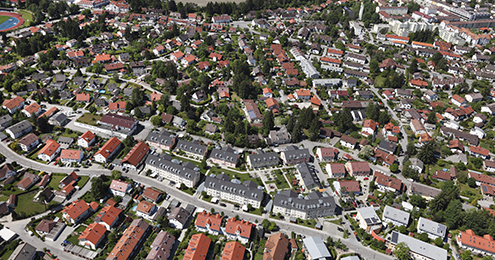
In this blog post, we explain in simple terms how a developer is now expected to set the level of affordable housing which the Mayor of London deems viable for a particular site. This is part of our 'back to basics' affordable housing series.
The Mayor is fed up with developers arguing that it's not viable for them to deliver policy compliant levels of affordable housing due to the high prices they are paying for sites. In his Supplementary Planning Guidance (SPG) on Affordable Housing and Viability issued last August, Sadiq Khan refers to the 'circularity' this causes: land prices are higher than they should be because buyers and sellers are not factoring in delivering much affordable housing.
The Mayor wants to stop this by 'embedding' delivery of policy compliant levels of affordable housing into land prices. To do this, he is going to have no regard to the price developers actually paid for a site. The maximum he will let developers factor in to viability calculations is the value a site has in its existing use plus a margin of 10-30% where appropriate (what he refers to as the "benchmark land value").
Please read on for the five step guide to calculating the level of affordable housing the Mayor considers viable.
Herbert Smith Freehills is running workshops which talk through an example calculation to show how this approach to viability assessment works in practice. In the workshop we also run through calculations showing how early and late viability reviews work (post-planning) under the Mayor's SPG. This will be the subject of future blog entries. Please contact us for more information.
Step 1: Gross Development Value
Step 4: Comparing Residual Land Value and Benchmark Land Value
Step 1: Calculate the Gross Development Value: The first thing to do is to work out how much the total sales value of all the units in your development would be if they were sold with a fully policy compliant percentage of affordable housing. So if the planning authority has a target of 35% affordable housing (to be delivered in a ratio of 70:30 – intermediate: social rent), then the developer needs to work out how much those affordable units would sell for to a registered provider of affordable housing, and how much the remaining 65% of market units would sell for.
Step 2: Calculate the Residual Land Value: The next step is to work backwards from that hypothetical sales value to find out how much the developer could afford to pay for the site. In most cases this will be far less that the developer actually paid for a site. While the Mayor expressly will not take account of what the developer actually paid for a site, he will allow the "benchmark land value" to be factored in to viability calculations if this is higher than the residual land value. So the next step is to calculate this value.
Step 3: Calculate the Benchmark Land Value: The benchmark land value is the value of a site in its existing use (say, use as an office building) plus a margin which could be between 10-30% (the margins quoted in the SPG). This aims to recognise the reality that if a site has a valuable price in its existing use, no one is going to sell it for a lower price than that. In fact, in order to bother selling the site at all, the owner will want to get a bit of a margin over and above that existing use value (often referred to as "existing use plus").
Step 4: Comparing the Residual Land Value and the Benchmark Land Value: When the benchmark land value is higher than the residual land value, the Mayor would accept that it's not viable for the developer to deliver the Council's target level of affordable housing in their required 70:30 tenure split. Delivery of units on that basis simply would not generate enough sales value for the developer to have paid the price they need to pay for a site with a valuable existing office use. So the next step is to work out how much affordable housing the developer should be able to deliver on this site, while still making a fair profit. This is step 5.
Step 5: How much affordable housing can the developer afford to deliver on this site, factoring in the benchmark land value? The final step is to work backwards from the benchmark land value to calculate what sales revenue the developer needs to generate in order to turn a reasonable profit. And once you have the gross development value, it will be a matter of negotiation between the developer, the Council and the Mayor as to how this is achieved: what split between social rented units, intermediate units and market units must the developer commit to in the section 106 agreement in order to reach this gross development value?
Comment: The real issue is that many developers are in a bind. They paid more than the benchmark land value for their sites, yet the Mayor is using the benchmark value to calculate what he deems should be viable for them to provide. For land sold now, the effect of the Mayor's new approach may be to drive down prices to the benchmark land value level. But for those developers who bought land before the SPG was published, what is viable for them to deliver in the real world and what the Mayor deems viable for them to deliver simply may not tally.
Please contact us for more information and to enquire about our workshops on this subject.
Author: Catherine Howard, Partner, Planning, Real Estate, London
Key contacts
Disclaimer
The articles published on this website, current at the dates of publication set out above, are for reference purposes only. They do not constitute legal advice and should not be relied upon as such. Specific legal advice about your specific circumstances should always be sought separately before taking any action.


